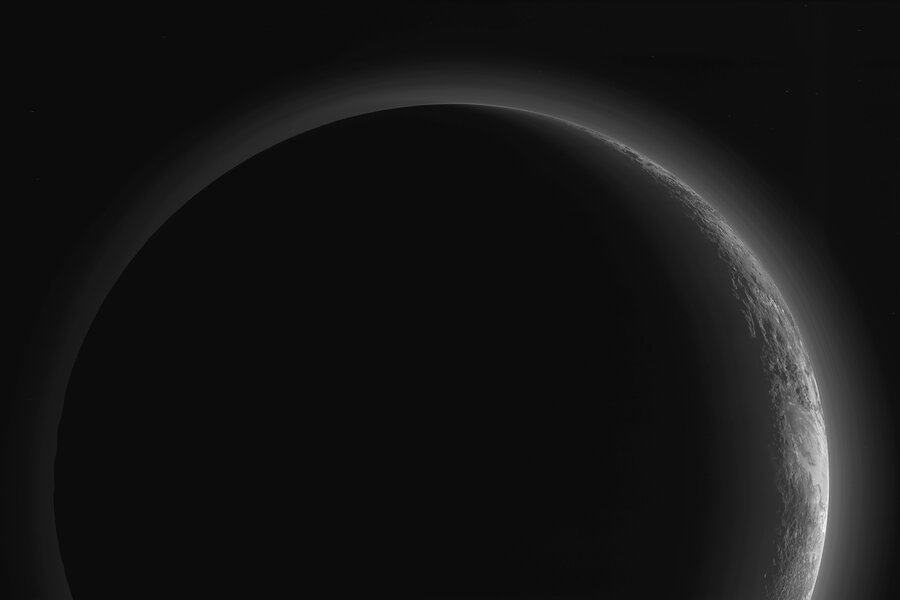Brilliant planetary halo: Behold, Pluto bathed in ring of resplendent light
Loading...
A new high-resolution image from NASA shows what Pluto's crescent looks like in its entirety, and it’s beautiful.
NASA released an initial image of the tiny, distant former planet's crescent in September, but that photograph, taken by the New Horizons spacecraft during its journey past Pluto in June, was blurry and incomplete.
Images from the historic flyby have been arriving on Earth in dribs and drabs for the past several months, and each one has been a "stunning reminder of how radically… years [of interstellar exploration] have changed humanity’s understanding of its cosmic neighborhood,” according to The Christian Science Monitor's Pete Spotts.
In other words, as we continue to explore the farthest reaches of our solar system, the more we learn not only about those distant planets, but also, perhaps, about their similarity to Earth.
The new photograph from NASA shows what Pluto looks like when the dwarf planet is illuminated by the sun. Although the sun is about three billion miles from Pluto, it still gives a transcendent glow to Pluto’s Sputnik Planum, an icy plane on Pluto’s lower right and considered part of Pluto’s “heart,” or the region south of Pluto’s equator that has a distinct heart shape.
It also showed blurry stars that moved out of focus as New Horizons positioned its camera to obtain a better view of Pluto, and reveals Pluto’s atmospheric layers – comprised of nitrogen and other gases – in all their hazy and beautiful detail.
The newly better-focused image gave scientists at NASA enough understanding to see Pluto’s pitted terrain, and even name two of the craters that dance across its surface, one of which is filled with ammonia and the other with water. Perhaps in anticipation of the new “Star Wars” movie, NASA chose to name those craters Organa and Skywalker, after the science fiction series' Luke and Leia.









